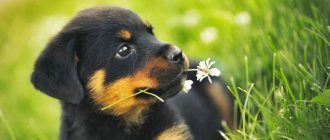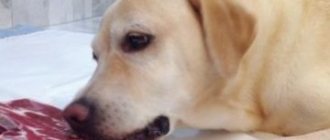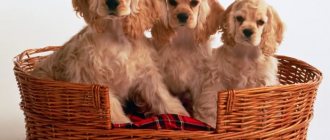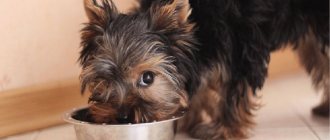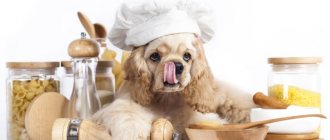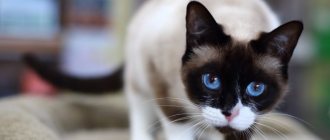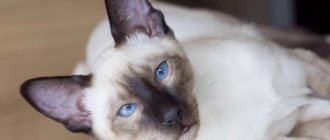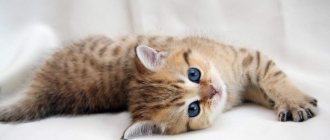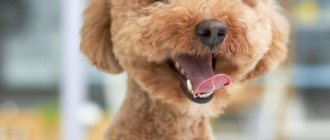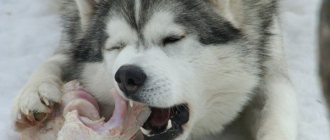When you have a small Siamese kitten, the first thing you should know is that any food you feed your baby should be healthy, balanced and nutritious. After all, the body of a small pet only needs proper nutrition, so the owner must provide the animal with quality food.
The key to the health of little Siamese depends on proper feeding in the first place. The menu should be varied and contain all the beneficial substances that a growing little body needs. There are also foods that are strictly prohibited to give to your pet. Let's take a closer look: what to feed a Siamese kitten, and what not to?
what to feed a Siamese kitten
Breed Features
Siamese cats are one of the oldest breeds of the Siamese-Oriental group, which was bred in Siam.
Important! From ancient legends it is known that Siamese cats accompanied the souls of their owners into the afterlife. You could pay with your life for trying to take a Siamese abroad or for causing harm to the animal.
Siamese cats are very jealous. They are the center of attention. Therefore, they do not always get along with other pets (cats, dogs) and do not get along well with children.
Siamese cats cannot tolerate prolonged separation from their owners. Leave the house for a long time, provide your pet with toys so that the cat does not get bored in your absence.
It is believed that Siamese are very picky eaters. In some ways this is true. Siamese are great gourmets and may show interest in foods that cats might not expect. For example, your pet can eat seeds, nuts, mushrooms, and fruits. In general, there are no problems, but still, do not forget that not all the products and treats that we offer to the fluffy are good for his health and, in particular, digestion.
Feeding with natural products
If you want to feed your Siamese natural products, then you should make sure that they contain the necessary minerals and vitamins. Many people prefer rabbit meat. If the animal is mischievous and refuses such a delicacy, you can try boiling it and offering it chicken or turkey. Few pets will pass by such a tasty treat.
Meat is the basis, but it must be supplemented with cereals and vegetables . The four-legged animals gobble up buckwheat, rice, oatmeal, polenta, and wheat porridge with appetite. And in order for the food to be rich in healthy ingredients, you should add some grated vegetables to it. It could be carrots, zucchini, pumpkin, cauliflower. You should not overdo it with these products, because vegetables greatly clog the smell of porridge and meat, which repels the Siamese.
Important! When preparing food for your cat, you should not add salt or other spices to it. Animals don't need them.
Choosing a place and dishes
For a comfortable life, a Siamese kitten needs to arrange a place to rest and sleep, purchase various toys, preferably interactive ones, and grooming and hygiene products (brushes, shampoos, sprays).
Set up a place where your Siamese kitten will eat and drink water. Bowls for food and water should be placed in a secluded, quiet place. During meals, the cat should not feel stressed. If there are other animals in the house, so that the Siamese does not experience discomfort, cat containers can be placed on the windowsill, cabinet, or other elevations accessible to the kitten.
Bowls can be:
- made of high quality plastic;
- ceramics;
- glass;
- clay;
- stainless steel
Advice! Do not use aluminum kitten bowls. When in contact with certain products and high temperatures, this metal releases harmful chemical compounds that pass into food and feed.
When choosing a material for cat dishes, consider its quality parameters and ease of care.
For food, bowls should be wide and not too deep. If you plan to feed dry, ready-made food, you can purchase one bowl, divided into several sections. Make sure that your pet's whiskers do not come into contact with the edges of the dishes while eating. Bowls should be stable and not make noise while your pet is eating food.
As for drinking water bowls, Siamese are quite picky in this regard. Some pets want to drink water from our dishes or only from the tap, others prefer to lap up water from a bucket. Indeed, the Siamese breed is prone to gigantism. Therefore, taking into account this feature of cats, place a deep, wide bowl for water.
The choice of place and utensils largely depends on age, breed, individual physiological characteristics, and conditions of detention.
After each meal, be sure to wash bowls under running water without using any household chemicals. Containers for food and water should always be clean.
External characteristics
The most striking distinctive feature of the Siamese is the dark pigmentation of the paws, tail and “mask” on the face (acromelanic color) and blue eyes.
- The coat is short and shiny.
- An integral feature of these cats is elegance and grace.
- Marking colors range from black and chocolate to blue and purple. In cold climates their color is richer.
- All kittens are born white and begin to darken at 2-3 weeks, acquiring their final color by the age of one year.
It is difficult to confuse a Siamese cat with another breed. A similar color is practically not found in nature.
When choosing food for your pet or pet, be selective. In this breed, if the diet is incorrect, some quite characteristic diseases or consequences are possible.
Sample menu by age
When creating a sample menu by age for Neva kittens, take into account the digestive characteristics of your pet.
In the first 11-13 months, you should not dramatically change the Siamese’s diet. Stick to the feeding schedule, routine and routine. If there is a need to replace the diet, the transition should be gradual.
Up to a month
Up to a month from birth, the main nutrition of newborn kittens is maternal colostrum and milk, which contain nutrients for development and protective antibodies.
If the kittens are orphaned, Siamese are transferred to artificial feeding or they look for another nursing cat who will take care of other people's babies. Up to two weeks, the kitten eats 9-10 times without stopping to sleep at night, drinking 3-4 ml of milk at a time.
For artificial feeding, cat milk substitutes and infant formula without sugar or fillers are used.
1 month
At 1 month, kittens continue to feed on their mother's milk. To feed artificial kittens, high-quality cat milk substitutes and infant formula are also used. Ready-made formulations in the form of capes for feeding kittens from 1 to 3 months are also available for sale.
The first complementary foods are gradually introduced per month. Children are given boiled minced chicken, meat pates, and purees. The average daily norm is 50-85 g.
2 months
At 2 months, in addition to mother's milk, kittens are gradually accustomed to new foods. Kittens are fed 5-6 times a day at the same time.
Mixed cats
Despite the fact that kittens from representatives of various breeds can be bright, graceful and funny, mixed breeds will never become the owners of a pedigree and will not take first places at exhibitions.
Mixed-breed cat - what is it? The answer to this question is known to every breeder, who mercilessly cull kittens born from different breeds. But many modern breeds appeared through random crossing. This is how the Broomilla breed arose from a Persian father and a Bruma mother. The first offspring was not considered a breed, but thanks to the work of the breeder, who continued to work on improving the new species, the Broomilla was recognized and included in the International Register of Pedigree Cats.
Vitamins and supplements
Mineral preparations, vitamins and supplements should compensate for the lack of all nutrients necessary for a growing body. It is best to use ready-made complex vitamin and mineral formulations that your veterinarian will recommend (Tetravit, Trivit, Gamavit).
You can give your Siamese dry yeast, meat and bone meal, crushed eggshells, and fish oil.
With a ready-made diet, vitamin supplements are not given to the kitten, since high-quality food contains all the necessary substances, including essential amino acids.
Ready-made industrial feeds
If the owner, due to certain circumstances, cannot or does not want to feed his pet “naturally,” the best option is dry/wet food. According to veterinarians, the following are suitable for Siamese:
- 1st choice . This extremely healthy food belongs to the premium category. Developed by specialists for especially demanding cats. It has a high protein content. With regular use, the fur coat becomes incredibly beautiful and shiny, and the pet’s activity increases. The diet also prevents unpleasant odor from the mouth.
- Nutra Mix . The food is available in dry form. Contains exclusively natural and healthy nutrients, a sufficient amount of vitamins and minerals. The products are available in a wide variety of flavors, satisfying even the most capricious and picky eaters of Siamese.
- Orijen . This is a diet from a well-known Canadian manufacturer, which has already received good reviews from Siamese owners and veterinarians. Does not contain harmful components that negatively affect the cat's body.
- Perfect Fit . Designed for adult animals aged 1-8 years. Contains all the necessary elements for the comprehensive provision of the body. Can be used daily.
- Brit Family Plate . Relatively inexpensive, but quite a good product. Sold in both dry granule and wet canned form. It contains whole pieces of meat and fish oil. Owners say that after switching Siamese cats to this food, their fur becomes shiny and their behavior becomes active.
You cannot combine dry and wet food in one serving. It is best to alternate them, giving them, for example, dry granules at one feeding, and canned food, jelly or pate at another. When feeding industrial feeds, it is important to provide the animal with free and constant access to fresh water.
Siamese cats have a rather sensitive digestive system and conservative tastes, so it is not worth switching them to other types of food unless absolutely necessary. If for certain reasons this still has to be done, this process should occur gradually. The transition to a new type of nutrition occurs throughout the week:
- Day 1-2 – 75% of food is the animal’s usual food, 25% is new;
- 3-4 days - 50% of the usual food and 50% of the new food;
- 5-6 – 75% of the new food and 25% of the previous one;
- Day 7 – 100% new food.
If it is difficult to cope with the preparation of a menu for a Siamese cat on your own, the owner should seek advice from a specialist who will select the best feeding option. It is important not to experiment with nutrition, and if you notice a cat refusing food, be sure to contact a veterinarian.
Source
Water
Drinking fresh and clean water should always be freely available to the Siamese kitten, regardless of its diet. Use only filtered, settled or bottled water without carbonation. Kittens love to drink water straight from the tap. But it contains chemical compounds, chlorine and other elements of the periodic table that will not benefit the pet’s body.
Change your drinking water at least once a day. Before changing the water, rinse the bowl and wipe it off with a clean sponge.
Diet-related health problems
The list of diseases and natural defects to which Siamese cats are predisposed is not that long. Most illnesses can be avoided by following a proper diet. Siamese may experience the following ailments:
- inflammation of the oral cavity (an excellent prevention of this pathology is the inclusion of dry food in the animal’s diet);
- diseases of the respiratory system - rhinotracheitis and calcivirosis (only natural and expensive food should be used as food);
- allergic reaction (in this case, the cat must be put on a hypoallergenic diet).
What not to feed a Siamese kitten
Some food products and ready-made foods can harm the digestive tract of a Siamese kitten and even provoke further systemic disorders, metabolic disorders, and chronic pathologies in the functioning of the endocrine and digestive systems.
What you should not feed a Siamese kitten with a natural diet:
- sweets, fresh baked goods;
- sweet fruits, vegetables that cause fermentation and flatulence;
- stale, rotten, moldy products;
- mushrooms;
- legumes (soybeans, corn, beans);
- pasta;
- canned fish;
- frozen or steamed fresh meat;
- low-quality by-products;
- salty, spicy food;
- fat meat;
- by-products of dubious origin;
- food for dogs, adult cats, economy class products;
- smoked meats (sausages, frankfurters).
What types of British cats are there - all colors in pictures
Many of them have existed since the appearance of the breed, and some were obtained more recently as a result of careful selection.
Solid colors
Chocolate Britons have a nose color that is slightly darker than the coat or matches its color, while Cinnamon, on the contrary, has a pinkish-brown nose that stands out against the darker coat.
Cats of the fawn color (also called the color of a young fawn) have fur of a warm light beige shade, and the pads of their paws and nose are a delicate pinkish color.
Tortoiseshell colors
This can be a combination of rich colors (black, chocolate or cinnamon) with red, as well as blue (or purple) with cream.
The paw pads are pink or black, and the eyes are copper and gold shades. Cream slippers on the paws or short stripes on the nose are possible.
Color point color
A characteristic feature of this group of colors is a light body color and contrasting dark areas - the muzzle, ears, paws and tail.
Tabby colors
Dark stripes stretch along the back all the way to the tail, on the sides there are patterns in the form of curls, the tail and neck are decorated with rings. Colors of this type include marbled on gold and silver, as well as black marbled.
Tiger Tabby (also known as Tabby or "Mackerel") - A longitudinal stripe runs along the line of the spine, from which thin stripes descend on the sides.
Spotted tabby - spots are located on the back and sides, they stand out against a light background. Their shape can be oblong, oval or round.
Sometimes the tail is also spotted or decorated with open rings.
Source

